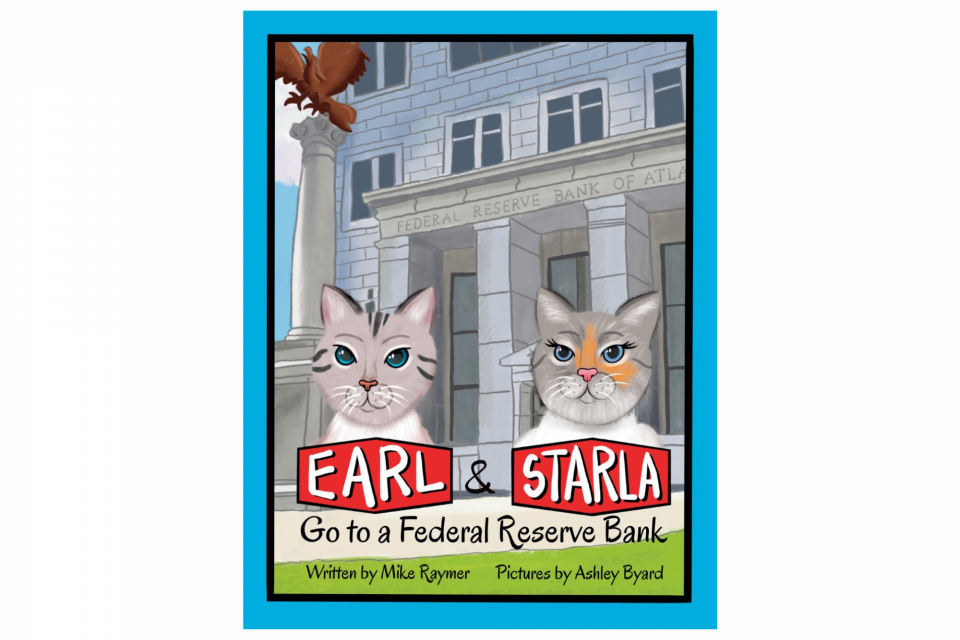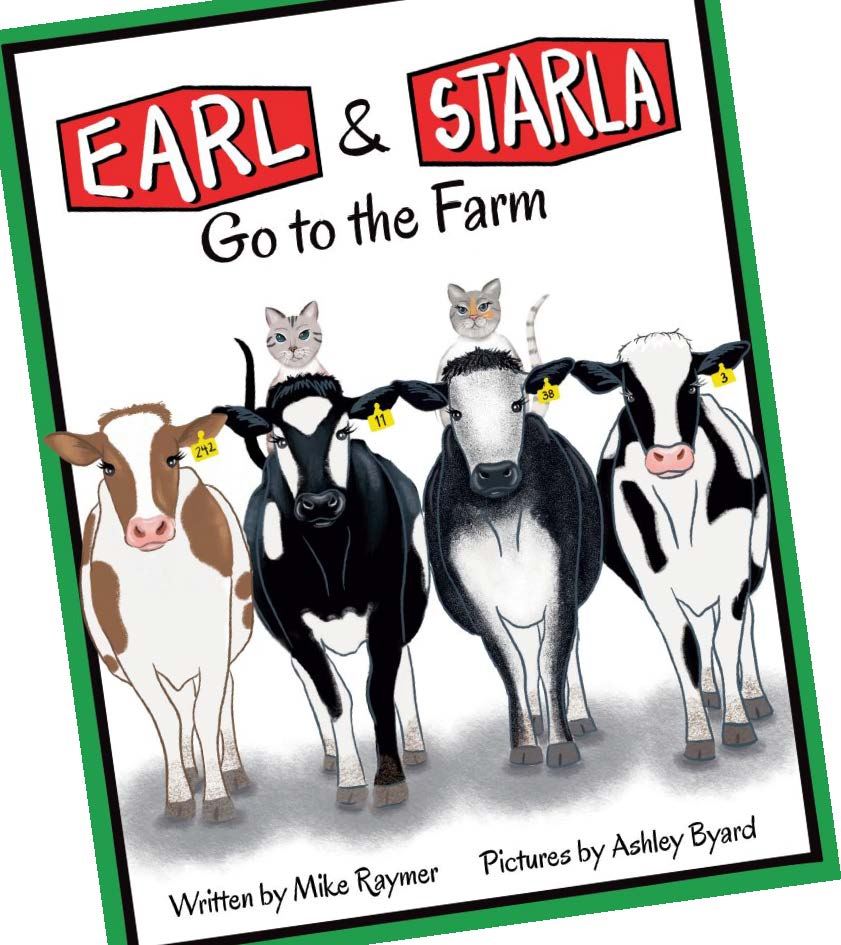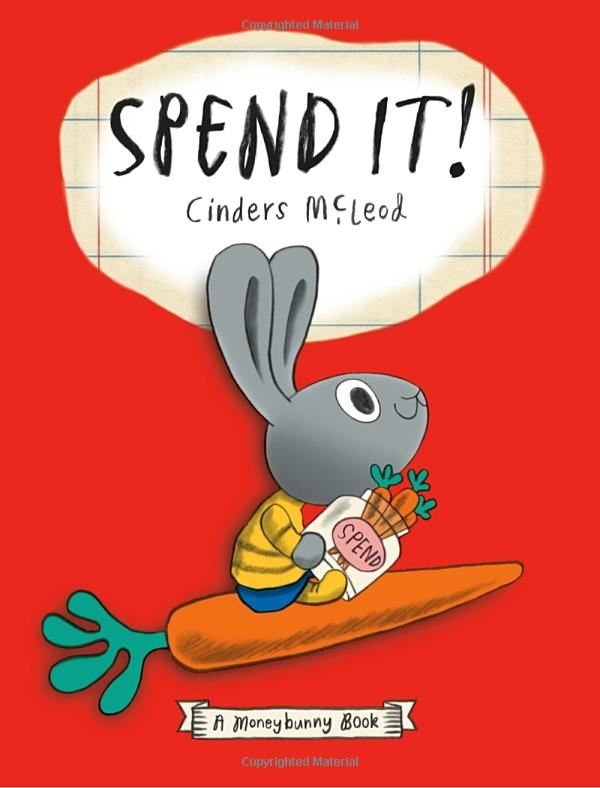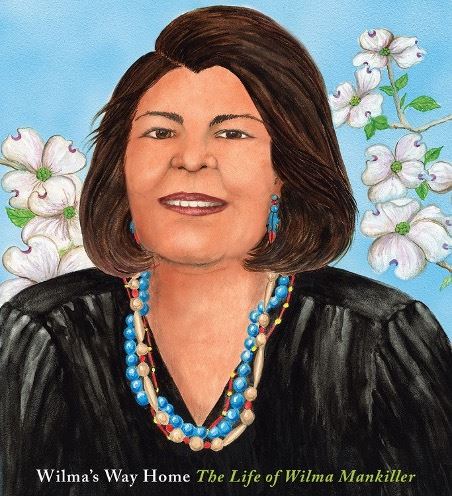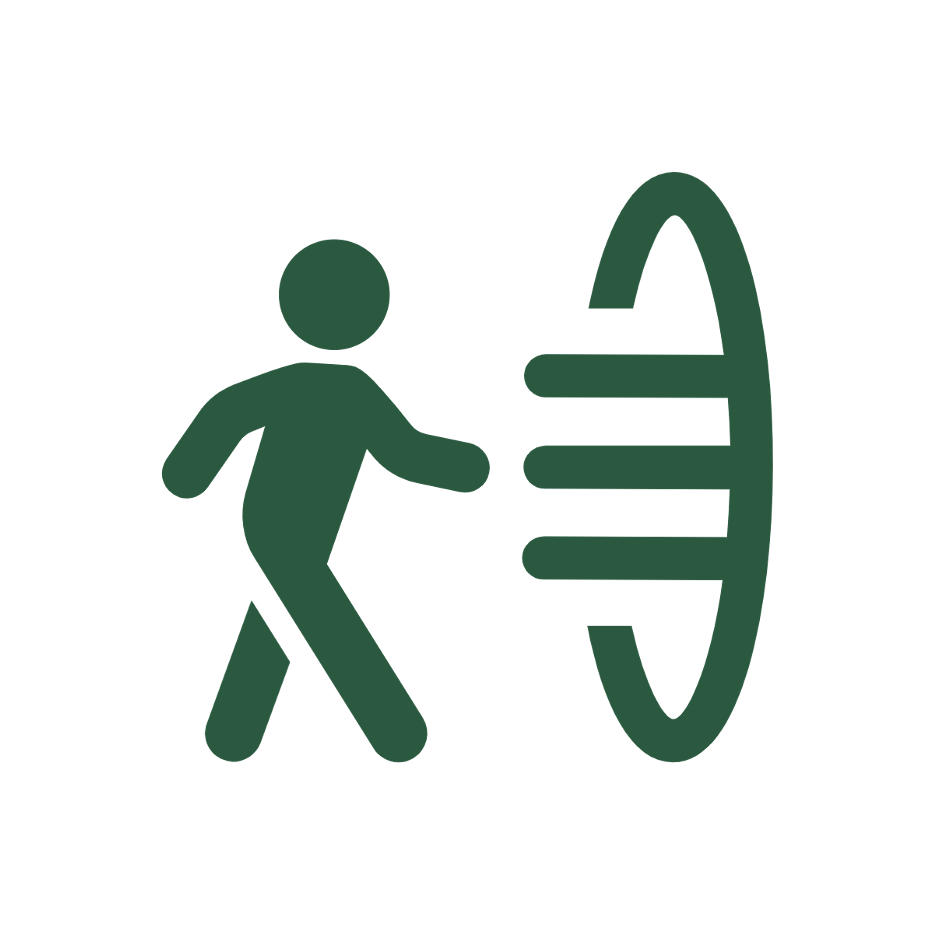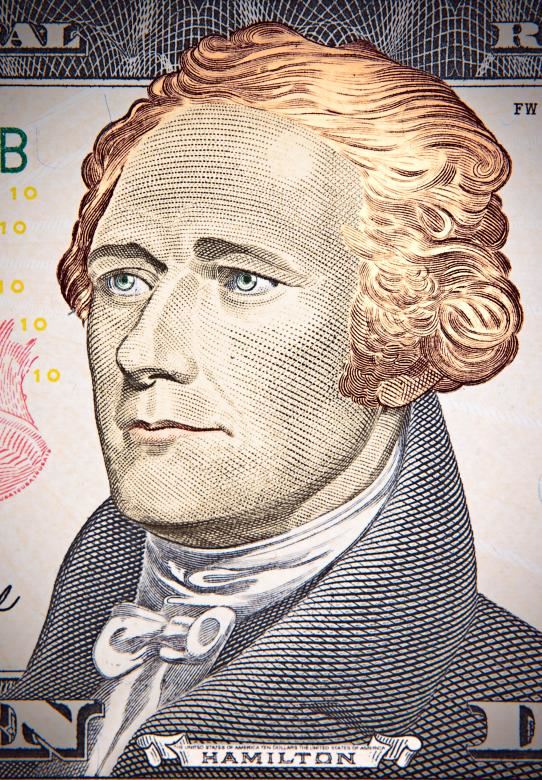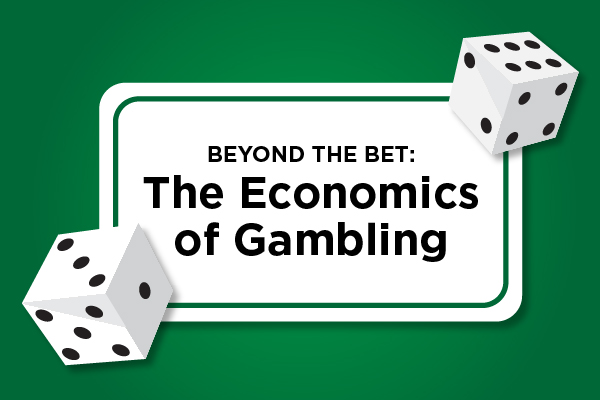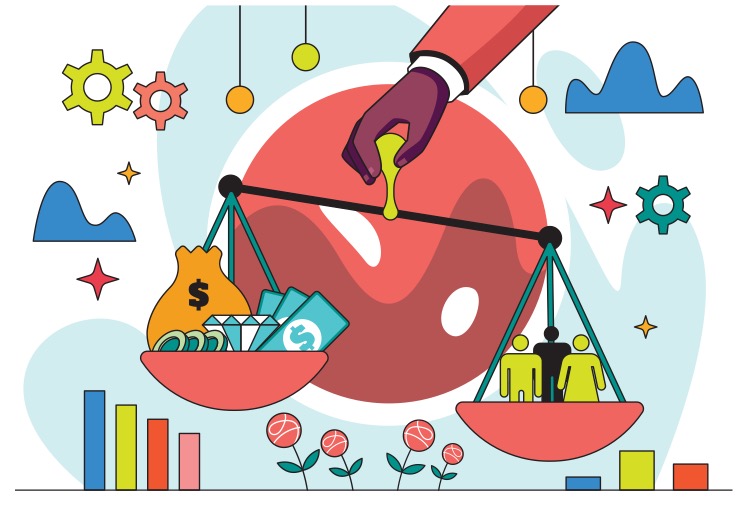Curriculum Award Winners |
Gold - 2024 | $mart Path VideosJulia Heath, Economics Center, University of Cincinnati; Mike Raymer, Georgia Council on Economic EducationThis is the second set of six $martPath puppet videos, this set created in partnership between the Alpaugh Family Economics Center and the Georgia Council on Economic Education. Each video has an accompanying lesson, so the videos fulfill the same function in the classroom as a children's book. Each video was designed to highlight a specific economic/personal finance topic. |
Gold - 2024 | Earl and Starla Go to SpaceMike Raymer, Georgia Council on Economic EducationYour favorite cats are back for another economic adventure and this time, it’s out of this world – literally! Tag along as Earl and Starla learn all about astronaut training, space suits, productivity, and how governments and private businesses pay for these things. |
Gold - 2024 | Eco-EconomicsAngie Battle, Georgia Council on Economic Education; Andrea Caceres-Santamaria, Federal Reserve Bank of St. Louis; Amanda Geiger, Federal Reserve Bank of St. Louis; Amanda Jennings, University of Michigan; Erin Yetter, University of DelawareEco-Economics: Energy and the Environment (high school lessons) is a set of lesson plans focusing on various energy related economic concepts. |
Silver - 2024 | Checking Out Your Economic Success Book BoxesLaurent Shifflett, JMU Center for Economic Education“Checking Out Your Economic Success Book Boxes” is a program that fosters economic literacy and personal finance skills in our younger generation. These boxes contain resources designed to make economics and personal finance engaging and accessible for children. All activities and resources are centered around a children’s picture book that introduces fundamental economic concepts in a fun and relatable way. Through delightful storytelling and vibrant illustrations, young readers will embark on an educational journey that lays the groundwork for the future. |
Platinum - 2023 | Earl and Starla Go to a Federal Reserve BankMike Raymer, Georgia Council on Economic Education |
Platinum - 2023 | Mathematics and Economics: Grades K-5Rachel Carpenter, Cindy Fitzthum, Colleen Gray, Valerie Walker, Lisa Wiener, MCEEMath and Economics was developed in response to an increased need for an interdisciplinary curriculum within the K-5 grade levels. The collection of lessons and K-5 MN academic standards-based (Social Studies-Economics 2011 & 2021 draft standards and Math 2007 standards) and national academic standards-based (National Economic Standards and Common Core Standards for Mathematics) lessons and pre/post assessments. to produce more milk in less time with fewer workers. |
Platinum - 2023 | Saving the Day: Garrett Morgan's Life-Changing Invention of the Traffic SignalAngie Battle, Marsha Masters, Lynne Stover |
Platinum - 2023 | Striking the Right Chord: Careers in the Music IndustryChris Cannon |
Gold - 2023 |
Bronze - 2023 | Economic Foundations with PlaydohChris Cannon |
| Platinum - 2022 | Earl and Starla Go to the FarmMike Raymer, GCEEEarl and Starla Go to the Farm is a children's book that explores how the concepts of specialization and productivity help two farmers run a successful dairy farm. By continually updating their capital goods and human capital, the dairy farmers have increased the overall productivity on their farm, and are now able to produce more milk in less time with fewer workers. |
Gold - 2022 | What Should Danny Do? |
| Gold - 2022 | How Technology and Specialization Increase Productivity: Earl and Starla Go to the FarmJoyclyn Battle, GCEEStudents will listen to a read aloud of Earl & Starla Go to the Farm in which dairy farmers explain how technology increases their productivity. Students will then engage in an activity in which they see as the use of technology increases, productivity increases as well. There is also discussion about how specialization contributes positively to productivity. |
Gold - 2022 | Spend It!Andrea J. Caceres-Santamaria, Federal Reserve Bank of St. LouisStudents listen to the story Spend It! This story is set in Bunnyland where carrots are money. Sonny the bunny has three carrots in his allowance jar. Sonny wants to buy everything, and he learns that he must make a choice because he does not have enough carrots to spend on everything he wants. Students will learn and review new vocabulary from the story (spend, wants, and choice) by completing a spelling activity, and complete a statement using the words. Students will also earn carrots by completing addition and subtraction math problems. Using the carrots they earn, students work with a partner to calculate if they have enough to purchase a toy they want from a list provided to them. |
|
Gold - 2022
| Mini-Economy Econ Explorers BoxJohn Kruggel, James Madison University Center for Economic EducationBecause teachers have limited class time for teaching economics in the elementary setting, the author worked with teachers to reduce the Mini-Economy curriculum down to eight lessons to implement a shortened Mini-Economy unit. |
|
Gold - 2022
| Wilma's Way Home: The Life of Wilma MankillerLynne Stover, James Madison University Center for Economic EducationThese two lessons are based on the picture book biography of Wilma Mankiller who made history in 1985 when she became the first woman elected to lead the Cherokee Nation which is one of the largest Native American tribes in the United States. |
| Gold - 2023 |
FEE Learning Center Weekly Resources
Derek D'Angelo, Joel Miller, James Redelsheimer |
| Gold - 2022 | Efficient Time Travel with Financial IntermediariesMegan Kirts, University of Arizona Office of Economic Education; Thomas R. Brown FoundationIn this lesson students will participate in a simulation that demonstrates the importance of financial institutions in helping people accomplish their goals. Students will learn that commercial banks match savers with borrowers; and investment banks match entrepreneurs with investors. |
Silver - 2022
| Hamilton's National BankEva Johnston, Federal Reserve Bank of St. LouisIn this lesson, students participate in two rounds of a role play to help them understand the role of banks in facilitating economic growth through loans. Round 1 is conducted without a bank. After the first round, students read excerpts from Secretary of the Treasury Alexander Hamilton’s 1790 report to Congress in which he proposes a national bank because the United States had few banks at the time. Students then conduct Round 2 of the role play with a bank. After the round, students read excerpts from and summaries of the statute creating a national bank, Thomas Jefferson’s opposition, and Hamilton’s rebuttal. |
Platinum - 2024 | Econiful Unit 3: MacroeconomicsKathleen Cusack, Megan Kirts, Michela Wilson, EconifulUnit 3 (Macroeconomics) is part of a one-semester on-level high school economics curriculum. This literary-targeted course emphasizes active learning and research-based strategies for teaching and learning. Unit 3 is made up of twenty 45-minute lessons and explores three Big Ideas and three Essential Questions. |
Gold - 2024 | Eco-EconomicsChris Cannon, Georgia Council on Economic Education; Brett Burkey, Florida Council on Economic Education; Jamie Wagner, UNO Center on Economic Education; Megan Kirts, Econiful; John Kruggel, JMU Center for Economic EducationEco-Economics: Energy and the Environment (high school lessons) is a set of lesson plans focusing on various energy related economic concepts. The lessons include: 1 Household energy consumption/budgeting 2 Determinants of gasoline prices 3 Costs/Benefits of Nuclear energy 4 Oil imports and exports 5 Energy alternatives 6 The future of batteries 7 Energy regulation and deregulation 8 History of energy and energy resources |
Gold - 2024 | Externalities: There's No Use Crying Over SpilloversMike Kaiman, Federal Reserve Bank of St. LouisThis active lesson emphasizes the four major externalities found when production and consumption affect individuals outside of the immediate producer and consumer. After learning basic vocabulary associated with the concepts, students will demonstrate their understanding of the causes and consequences of each type of externality. Finally, students will practice how to draw and label graphs of the four types of externalities and identify any type of government intervention necessary to reduce deadweight loss in a transaction. |
Gold - 2024 | Monday Morning Economist Classroom EditionJoel Miller, Jadiran Wooten, Derek D'Angelo, Foundation for Economic EducationThis dynamic weekly curriculum resource is designed for university and high school educators, homeschooling parents, and students studying economics. Developed in partnership with the Foundation for Economic Education (FEE) and inspired by the popular blog by Virginia Tech economist/professor Jadrian Wooten, this resource aligns current events with foundational economic concepts to enrich classroom instruction. Each week, educators gain access to engaging lesson plans and activities that correspond to a specific news article, offering fresh perspectives on real-world applications of economic principles. |
Silver - 2024 | The Economics of GamblingJennifer Davidson, Nebraska Council on Economic Education; Dr. Jamie Wagner, UNO Center for Economic Education; Dr. Chris Cannon, Georgia Council for Economic Education; Matthew Pierson, Nebraska Council on Economic EducationThe lessons do not necessarily need to be completed in order and can also be used as stand alone single lessons. However, for a more in depth look into the Realities of Gambling, we suggest engaging students in all three lessons: Lesson 1: Beyond the Bet - Identifying Problem Gambling Lesson 2: Can Gambling Bring You More than Fun Sized Money? Lesson 3: Sports Betting |
Silver - 2024 | Ways to PayChris Cannon, Georgia Council on Economic Education; Princeton Williams, Federal Reserve Bank of AtlantaThis lesson takes a deep dive on payment methods including the vocabulary associated with payment methods, some of the variouss costs/benefits of different payment types, and an interactive section on acceptability. This lesson has been modeled at over a dozen workshops with very positive feedback from teachers. |
Platinum - 2023 | Start it Up!Chris Cannon, Fablevision, Georgia Public Broadcasting |
Platinum - 2023 | Teaching Market Structures with a Competitive Gum MarketCurt Anderson, Scott Wolla, Federal Reserve Bank of St. Louis |
Gold - 2023 | Econiful Unit 1: Economic FoundationsKathleen Cusack, Megan Kirts, Michela Wilson |
Gold - 2023 | General Economic Entrance/Exit TicketsMike Kaiman, Federal Reserve Bank of St. Louis |
| Silver - 2023 | A Case for Diversification: A Lesson on Better InvestingJoel Miller, James Redelsheimer, Foundation for Economic Education |
Silver - 2023 | Ethics, Economics, and Social IssuesChris Cannon, Ruth Cookson, Jennifer Davidson, Stephen Day, Chandler Jordan, John Kruggel, Matt Pierson, Jamie Wagner |
Silver - 2023 | Page One Reading Guide: What Should College Athletes Be Paid?Amanda Geiger, Jennifer Ives, Donna Stiller |
Bronze - 2023 | Learning Activity: Career EvaluationAmanda Geiger, Jennifer Ives, Donna Stiller |
Platinum - 2022 | What Happens When the Federal Reserve Raises Interest Rates?Mary Suiter, PhD, Federal Reserve Bank of St. LouisAndrea Caceres-Santamaria, Federal Reserve Bank of St. LouisStudents will learn that the Federal Reserve uses interest rate policies to promote maximum employment and price stability. They will participate in an activity to demonstrate how a change in the target range for the federal funds rate transmits through the economy. |
Gold - 2022 | Building Young EntrepreneursRobin Palmer, ACEEThis entrepreneurship course is designed to help students understand the decisions and actions that should be taken when deciding to become an entrepreneur. The materials are set up in 10 modules beginning with understanding the role that entrepreneurs play in our society to developing a pitch for investors and ending with marketing your business. Each module includes activities that require students to think and act to make decisions for their own entrepreneurial venture. |
Gold - 2022 | FRED Blog Reading Questions & AnswersDiego Mendez-Carbajo, St. Louis Federal Reserve Bank of St. LouisThe instructional resources described here use Federal Reserve Economic Data (FRED®) to place economic arguments related to diversity and inclusion topics in their historical and social context. FRED® Blog Reading Questions and Answers (Q&As) are comprised of a short essay based on a FRED® graph and include a four-question, multiple-choice, quiz. There currently are 45 resources freely available to educators and the public at large. They employ FRED® data to broach a wide range of topics in the areas of gender, race, and inequality. |
Gold - 2022 | Learning and Earning Digital BadgesScott Wolla, Diego Mendez-Carbajo, Andrea Caceres-Santamaria, Mary Suiter, Federal Reserve Bank of St. LouisDigital badges are learning tools. Rather than asking learners to absorb information, our digital badging programs present learners with dynamic opportunities to acquire and demonstrate their new or existing expertise. Many of our individual badges can be stacked into an overall marker of achievement, identifying the owner of the badge as a highly skilled or well-informed individual. |
| Gold - 2022 | GDP and Pizza Video SeriesScott Wolla, Federal Reserve Bank of St. LouisThis series of short videos provides an overview of this very important measure of economic production and covers some key ideas, such as the components of GDP expenditures, how imports are measured, why it’s important to control for inflation when examining GDP over time, why economists often use percentages to explain changes in GDP, how potential GDP is used to discuss the business cycle, and how automatic stabilizers can be used to smooth the business cycle. |
Gold - 2022 | Monetary Policy - The Economic Lowdown Video SeriesScott Wolla, Federal Reserve Bank of St. LouisThe Federal Reserve, “the Fed,” is the central bank of the United States. One of its important functions is to promote a strong U.S. economy. In fact, Congress has given the Fed two main goals: maximum employment and price stability. These videos explain how the Fed uses monetary policy to reach those goals. |
Silver - 2022 | AP Econ - Entrance and Exit TicketsEva Johnston, Federal Reserve Bank of St. LouisMichael KaimanThese entrance and exit tickets for AP Micro- and Macroeconomics align with the AP Micro- and Macroeconomics curriculum. They are short (less than five minutes), formative assessments intended to give instructors immediate feedback on the day’s lessons. |
| Bronze - 2022 | Future You: A Cost of Living ComparisonJoel Miller, Foundation for Economic EducationThis lesson allows students to consider their future role as income earners, and challenges them to consider how career choice and economic understanding may improve their future quality of life. Students will explore how choices today may impact their ability to achieve certain life goals by comparing career and regional living alternatives as variables impacting their future well-being. |

